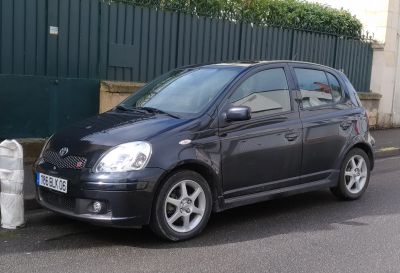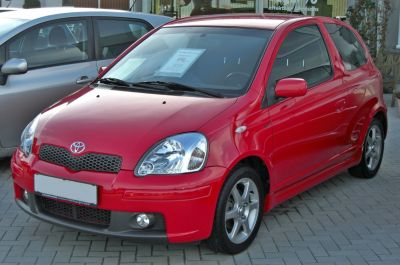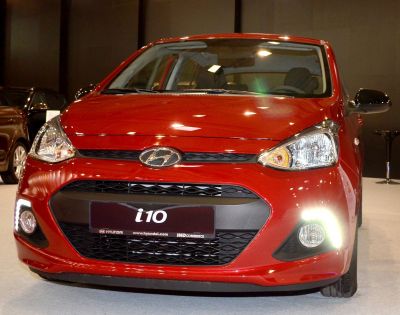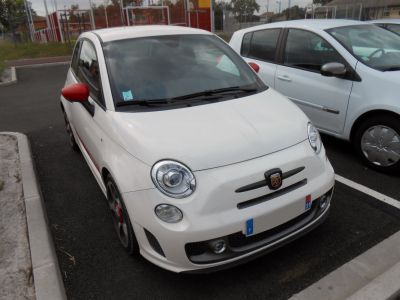 2016 Hyundai i10 II (facelift 2016) Dimensions, Size & Specs
2016 Hyundai i10 II (facelift 2016) Dimensions, Size & SpecsMeasurements of the 2016 Hyundai i10 II, engineered for optimal performance and comfort
| Dimensions | |
|---|---|
| Length: | 3665 mm144.3 in12.0 ft |
| Width: | 1660 mm65.4 in5.4 ft |
| Height: | 1500 mm59.1 in4.9 ft |
| Ground Clearance: | 149 mm5.9 in0.5 ft |
| Trunk Capacity: | 218-252 liter7.7-8.9 cu ft |
| Trunk Capacity (Max): | 1046 liter36.9 cu ft |
| Weight Specifications | |
| Curb Weight: | 1008-1064 kg2222-2346 lbs |
| Maximal permitted Weight: | 1420-1470 kg3131-3241 lbs |
| Roof Load: | 60 kg132 lbs |
| Tire Specifications | |
| Rims Sizes: | 14-inch rims:
|
| Tire Sizes: |
|
The Hyundai i10 II (facelift 2016) is a compact and practical hatchback produced between 2016 and 2019, well-suited for urban driving and small families. Measuring 3665 mm (144.3 inches) in length, 1660 mm (65.4 inches) in width, and 1500 mm (59.1 inches) in height, it offers a nimble footprint that makes parking and maneuvering in tight city spaces easy. The vehicle's ground clearance stands at 149 mm (5.9 inches), which is balanced for urban roads while providing enough clearance for modest obstacles.
The curb weight ranges from 1008 to 1064 kg (2222 to 2346 lbs), contributing to its fuel efficiency and agile handling. The maximum permissible weight is between 1420 and 1470 kg (3130 to 3240 lbs), reflecting its capacity for passengers and cargo. The Hyundai i10 II facelift offers versatile storage, with a standard luggage capacity of 218 to 252 liters (7.7 to 8.9 cubic feet), expandable to an impressive 1046 liters (36.9 cubic feet) by folding the rear seats down, accommodating larger items with ease.
For enhanced road grip and handling, the car comes equipped with rim sizes ranging from 5.5J x 14 inches to 6.0J x 15 inches, paired with tire options of 175/65 R14 and 185/55 R15. Its roof can carry loads up to 60 kg (132 lbs), adding to its practicality for carrying additional gear or roof boxes.
Overall, the Hyundai i10 II facelift blends efficient use of space, lightweight design, and flexible storage options, making it an excellent choice for drivers seeking a compact hatchback with reliable urban performance and versatility.
Discover the standout features that make the 2016 Hyundai i10 II a leader in its class
Have a question? Please check our knowledgebase first.
The Hyundai i10 II facelift (2016-2019) measures 3665 mm (144.3 inches) in length, 1660 mm (65.4 inches) in width, and 1500 mm (59.1 inches) in height. These compact dimensions make the car well-suited for city driving and tight parking spaces while offering a practical interior layout.
The curb weight of the Hyundai i10 II facelift ranges between 1008 kg and 1064 kg (2222 to 2346 lbs), depending on the configuration. The maximum permissible gross weight varies between 1420 kg and 1470 kg (3130 to 3240 lbs). This light weight contributes to the car's agile handling and fuel efficiency.
With the rear seats upright, the Hyundai i10 II facelift offers a luggage capacity of 218 to 252 liters (7.7 to 8.9 cubic feet), enough for everyday errands or small shopping trips. When the rear seats are folded down, the capacity expands significantly to 1046 liters (36.9 cubic feet), providing ample space for larger loads or travel luggage.
The Hyundai i10 II facelift has a ride height of 149 mm (5.9 inches). This ground clearance allows the car to comfortably handle typical urban road conditions, speed bumps, and minor potholes without compromising stability, though it is not designed for off-road use.
This generation of the Hyundai i10 facelift comes with rim sizes of 5.5J x 14 inches and 6.0J x 15 inches. The tires fitted are 175/65 R14 and 185/55 R15. These sizes provide good road grip and contribute to a smooth and comfortable ride quality.
Yes, the Hyundai i10 II facelift’s compact dimensions—3665 mm (12.02 ft) long and 1660 mm (5.44 ft) wide—make it suitable for most standard residential garages. Its small footprint allows for easy parking in narrow spaces, making it an excellent choice for urban dwellers who often have limited garage or parking space.
Compared to the first-generation Hyundai i10, the second-generation facelift model is slightly larger and more refined. The 2016-2019 facelift version increased overall length to 3665 mm, offering improved interior space and comfort. Width and height remained similar but with a more modern design and better use of space, resulting in enhanced passenger and luggage room.
The Hyundai i10 II facelift competes effectively in the city car segment against rivals like the Volkswagen Up!, Toyota Aygo, and Kia Picanto. Its compact external dimensions make it easy to maneuver and park, while its luggage capacity of up to 1046 liters (with seats folded) is competitive. Additionally, its relatively generous ride height of 149 mm provides better clearance than some rivals, enhancing usability on uneven urban roads.
This model supports a roof load of up to 60 kg (132 lbs). This rating allows for the safe installation of roof racks or carriers for bikes, luggage boxes, or other accessories, provided the load does not exceed this weight. This expands the car’s practicality without adversely affecting safety or vehicle handling.
The Hyundai i10 II facelift was designed primarily as a compact, efficient city hatchback. It balances an economical footprint with sufficient interior room for daily commuting and small families. Known for reliability and ease of use, the i10's facelift introduced refreshed styling and subtle improvements in comfort. Typical use involves urban driving, short to medium trips, and easy parking, making it popular among first-time buyers and as a practical city car.
Discover similar sized cars.

| Production: | 1998-2008 |
|---|---|
| Model Year: | 1999 |
| Length: | 3660 mm144.1 in |
| Width: | 1625 mm64.0 in |
| Height: | 1485 mm58.5 in |

| Production: | 1998-2008 |
|---|---|
| Model Year: | 1998 |
| Length: | 3660 mm144.1 in |
| Width: | 1625 mm64.0 in |
| Height: | 1480 mm58.3 in |

| Production: | 2003-2005 |
|---|---|
| Model Year: | 2003 |
| Length: | 3640-3660 mm143.3-144.1 in |
| Width: | 1660 mm65.4 in |
| Height: | 1470-1500 mm57.9-59.1 in |

| Production: | 2003-2005 |
|---|---|
| Model Year: | 2003 |
| Length: | 3640-3660 mm143.3-144.1 in |
| Width: | 1660 mm65.4 in |
| Height: | 1470-1500 mm57.9-59.1 in |

| Production: | 2016-2019 |
|---|---|
| Model Year: | 2016 |
| Length: | 3628 mm142.8 in |
| Width: | 1910 mm75.2 in |
| Height: | 1516 mm59.7 in |

| Production: | 2013-2016 |
|---|---|
| Model Year: | 2013 |
| Length: | 3665 mm144.3 in |
| Width: | 1660 mm65.4 in |
| Height: | 1500 mm59.1 in |

| Production: | 2016-present |
|---|---|
| Model Year: | 2016 |
| Length: | 3660 mm144.1 in |
| Width: | 1893 mm74.5 in |
| Height: | 1490 mm58.7 in |

| Production: | 2012-2016 |
|---|---|
| Model Year: | 2012 |
| Length: | 3657 mm144.0 in |
| Width: | 1893 mm74.5 in |
| Height: | 1485 mm58.5 in |
